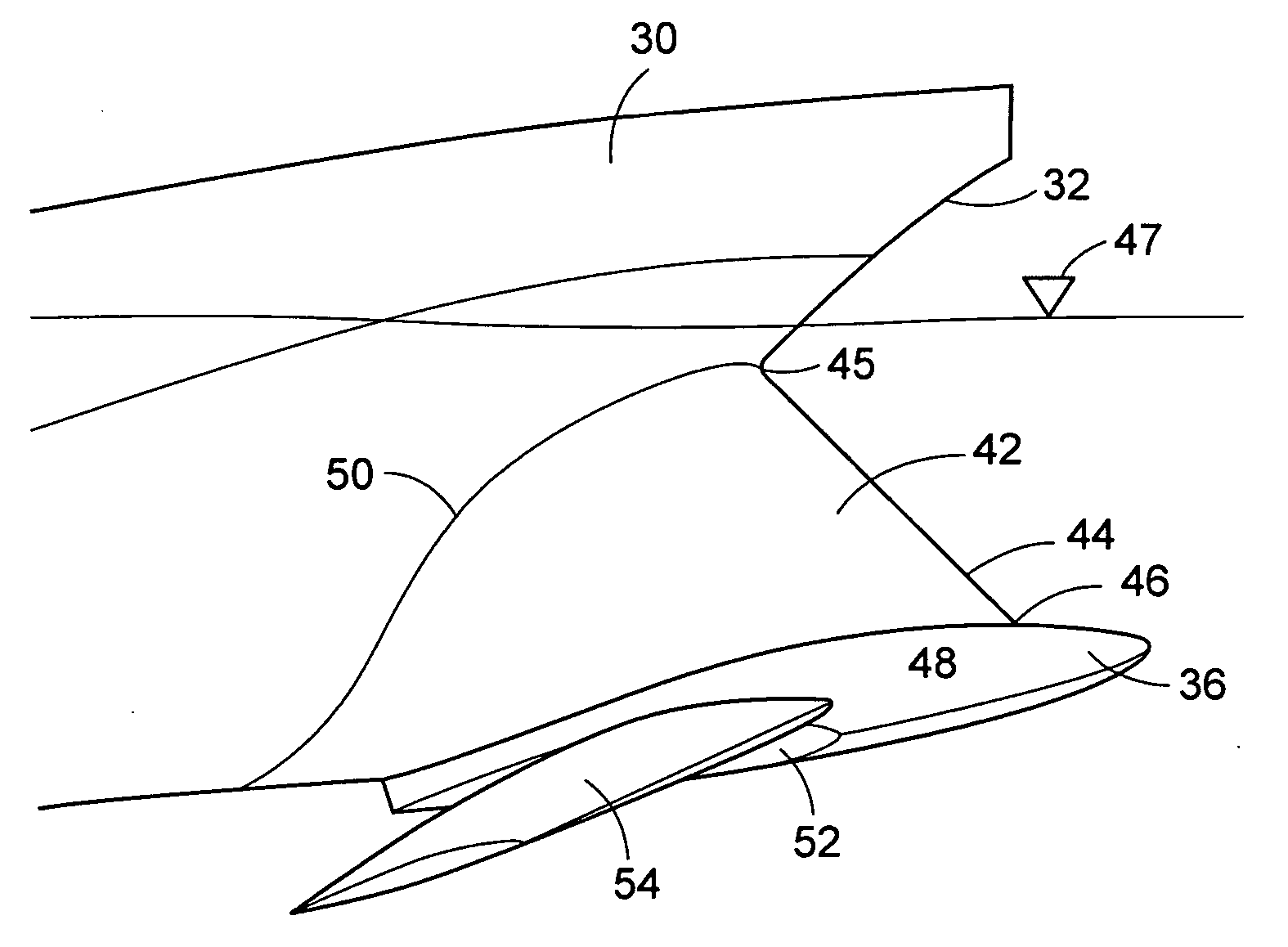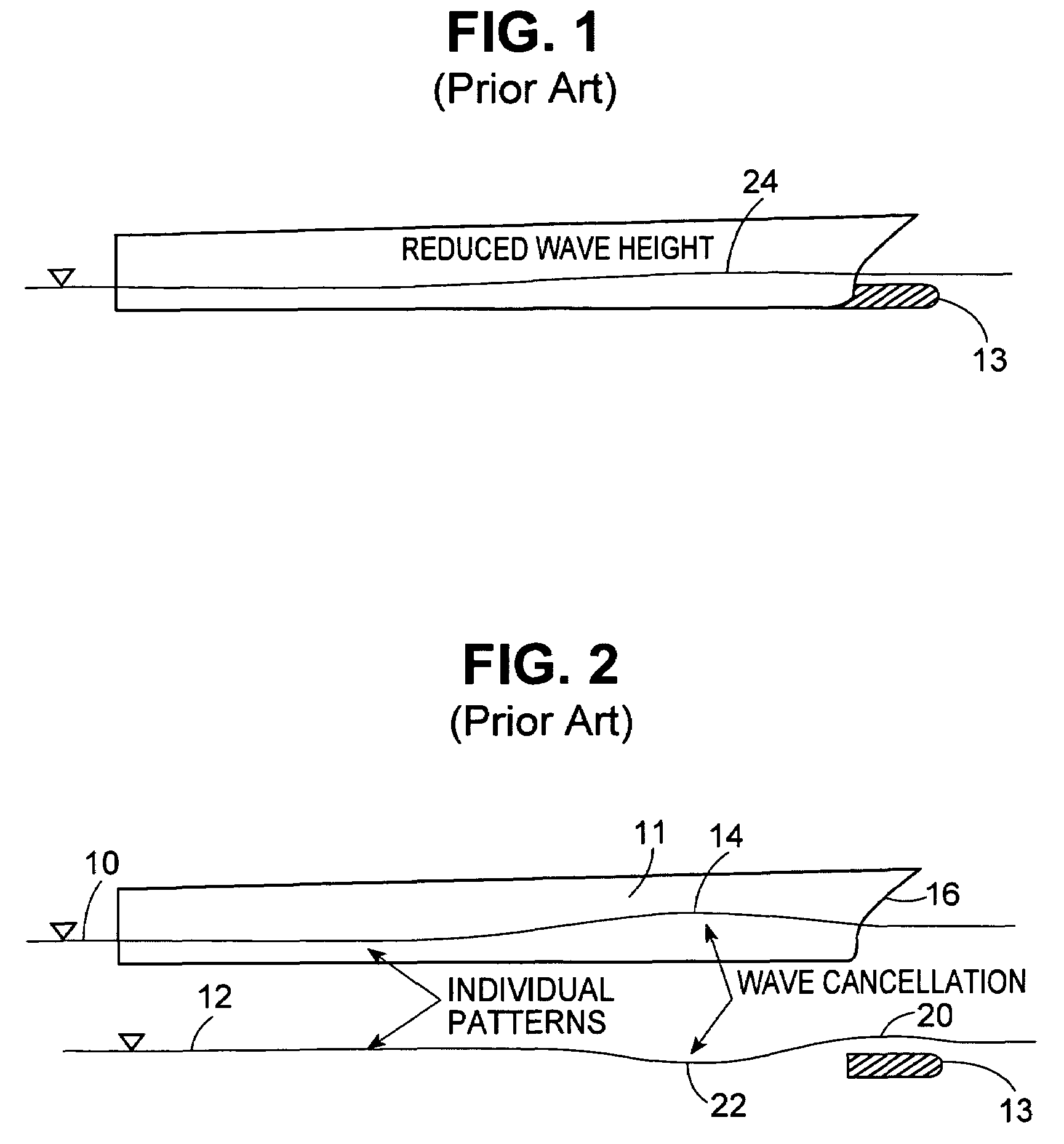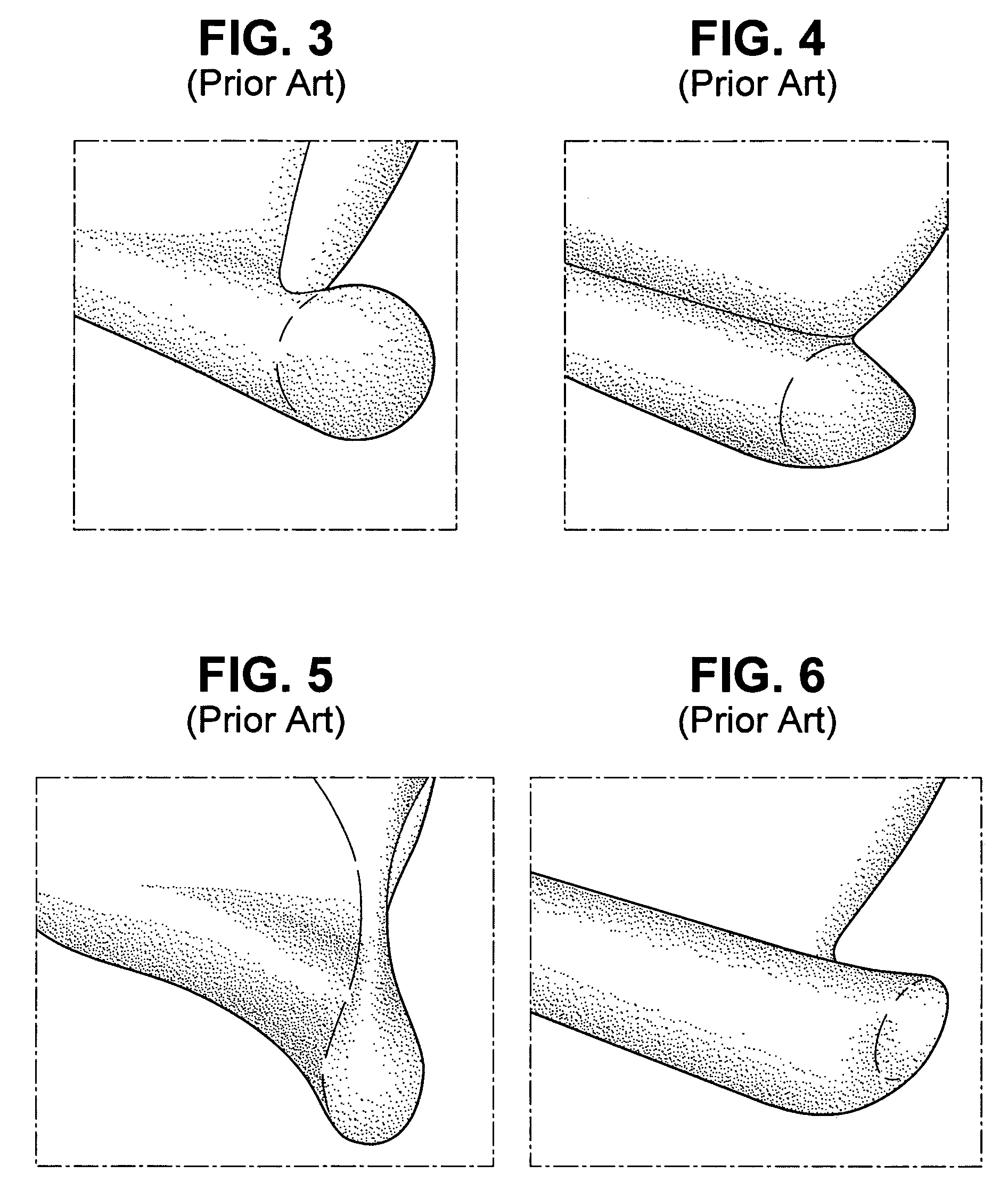Bow lifting body
a lifting body and bow technology, applied in the field of bows and watercraft, can solve the problems of unadjusted prior art structure, adverse effects, submerged bodies of marine vessels, etc., and achieve the effect of increasing the l/d ratio of the entire system, increasing the payload capacity of the ship, and increasing the lift to drag ratio
- Summary
- Abstract
- Description
- Claims
- Application Information
AI Technical Summary
Benefits of technology
Problems solved by technology
Method used
Image
Examples
Embodiment Construction
[0039]Referring now to the drawings in detail, and initially to FIGS. 7 and 8, two embodiments of watercrafts or ship hulls having a bow lifting body according to the present are illustrated. As seen in FIG. 7 a ship's hull 30 of conventional construction includes a tapered bow 32 and a bottom or keel 34. Secured to the bottom of bow 32 is a lifting body 36 formed in accordance with any of the embodiments of lifting bodies shown in FIGS. 1–6 and 13–27 of U.S. Pat. No. 6,263,819, although the embodiments of FIGS. 1 and 15 are currently preferred.
[0040]The lifting body 36 has a parabolic foil shape in longitudinal cross-section and a peripheral edge 38, referred to herein as the leading edge of the lifting body, which defines the widest portion of the body when viewed in plan. The edge is defined as a parabola substantially conforming to the conventional parabolic equation. The lifting body is generally symmetrical and longitudinal cross-sections taken parallel to its fore and aft axi...
PUM
 Login to View More
Login to View More Abstract
Description
Claims
Application Information
 Login to View More
Login to View More - R&D
- Intellectual Property
- Life Sciences
- Materials
- Tech Scout
- Unparalleled Data Quality
- Higher Quality Content
- 60% Fewer Hallucinations
Browse by: Latest US Patents, China's latest patents, Technical Efficacy Thesaurus, Application Domain, Technology Topic, Popular Technical Reports.
© 2025 PatSnap. All rights reserved.Legal|Privacy policy|Modern Slavery Act Transparency Statement|Sitemap|About US| Contact US: help@patsnap.com



